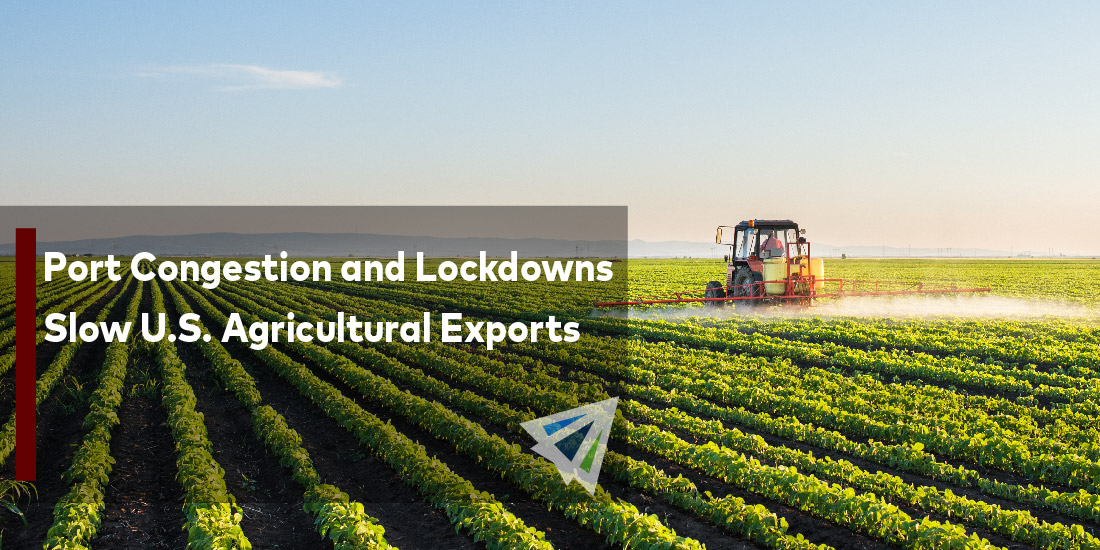Port Congestion and Lockdowns Slow U.S. Agricultural Exports
Reports have it that this is supposed to be an incredibly strong harvest year for U.S. based farmers. However, despite the forecasted bountiful harvest, U.S. ag (agriculture) exports are actually expected to decline for the second year in a row. There are myriad reasons, but they mostly boil down to the lockdowns in Asia and the congestion on the U.S. side – both at ocean ports as well as rail terminals.
The lockdowns have been a major bottleneck for Asia and the various markets they service. Due to the increased regulations, labor availability and cargo movement has been at an all-time low, and cargo movement has slowed drastically. This poses a significant threat to U.S. based farmers who rely heavily on the Asian market for exports.
Last year, Asia accounted for over 70 percent of many U.S. agriculture product exports, and the continent remains as one of the largest buyers of U.S. crops in general. However, exports to Asia had declined by over 10 percent last year and are expected to get even worse this year.
While the blame for slowed import activity is often placed on U.S. domestic shipping market activity, it’s also affecting our export markets. On the U.S. side, labor shortages and equipment shortages have contributed to the decline in both U.S. imports and ag exports over the last couple of years.
What’s the Holdup?
Soybean, hay, and cotton are a major source of revenue for U.S. based farmers, and they comprise roughly 60 percent of U.S. ag exports. China is a major purchaser of these crops, and until recent years, the country has taken much of the responsibility for compensating the U.S. farming industry. However, last year, things started to look a bit rough. The export of soybean, hay, and cotton dropped by over 10 percent in 2021, marking one of the most significant drops in ag export activity in recent years.
Most of these crops are grown in inland U.S. territory, which relies heavily on a steady and efficient supply chain in order to get shipments to the ports on the coast and overseas. But as we are all well-aware of, the U.S. shipping market has been everything but smooth the last several years.
U.S. farmers are listing several reasons they are experiencing issues with getting product shipped out. Firstly, the lack of empty marine containers makes it incredibly difficult to get cargo moving. However, it’s not just the equipment availability that’s an issue.
Intermodal rail service has been erratic and unpredictable, and ocean vessel schedule reliability is at an all-time low amidst global pandemic concerns and high levels of congestion. However, farmers are actually placing blame on carriers for deliberately limiting the bookings and equipment they allocate for ag exports in order to return empties to Asia to be refilled with more profitable products.
The most frustrating part about all of this for U.S. farmers is that their products are on a clock. How bountiful a harvest is has no bearing on actual profits if shipments rot while they wait to make it to their destination. A fate that too many farmers’ crops have faced in the last couple of years.
If you would like more information regarding this topic, contact our team at InterlogUSA and we will be happy to assist you on any questions or comments you may have! In addition, we have our weekly market updates that can provide you with relevant freight news, updates, developments across the industry, and more.
